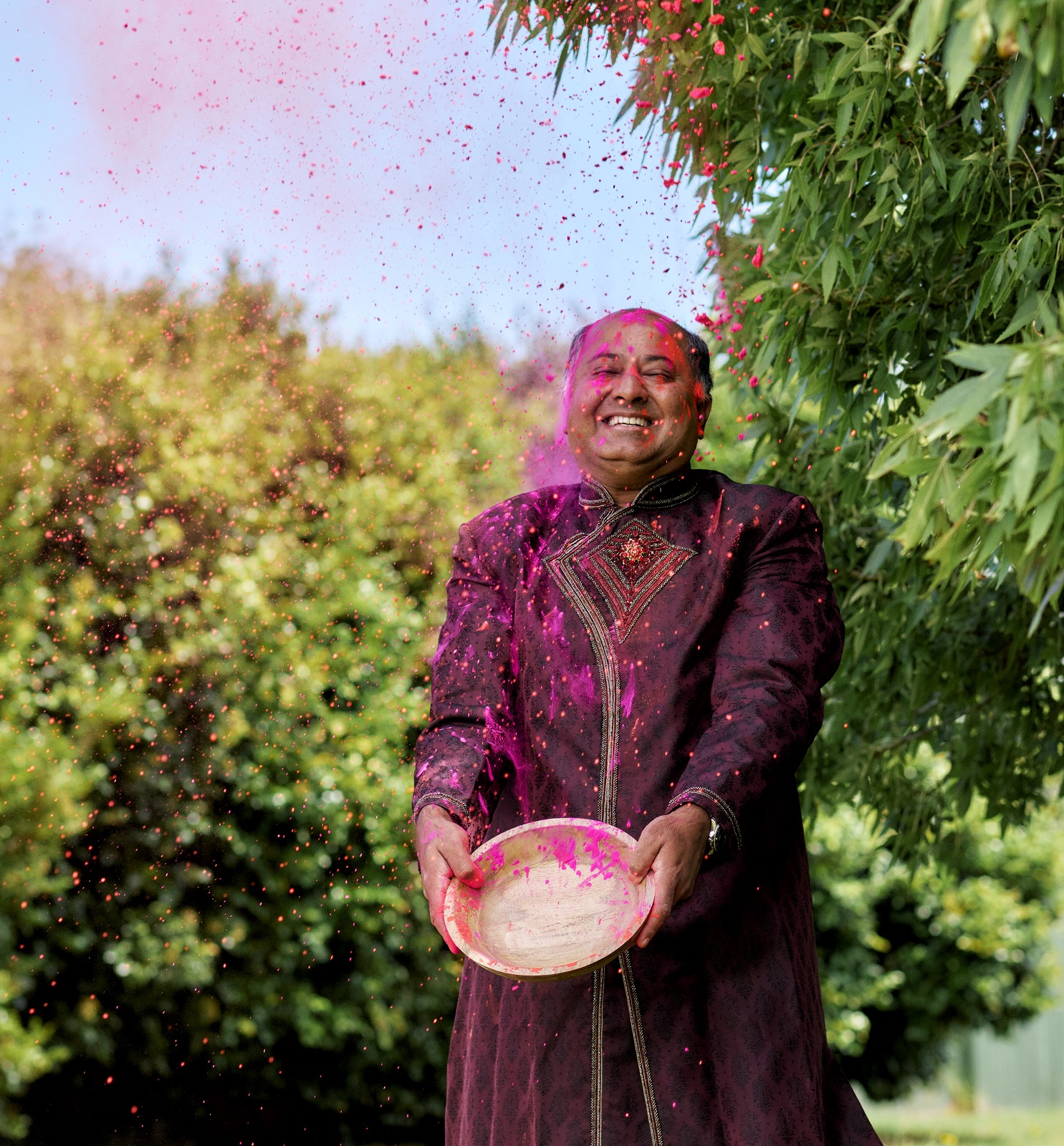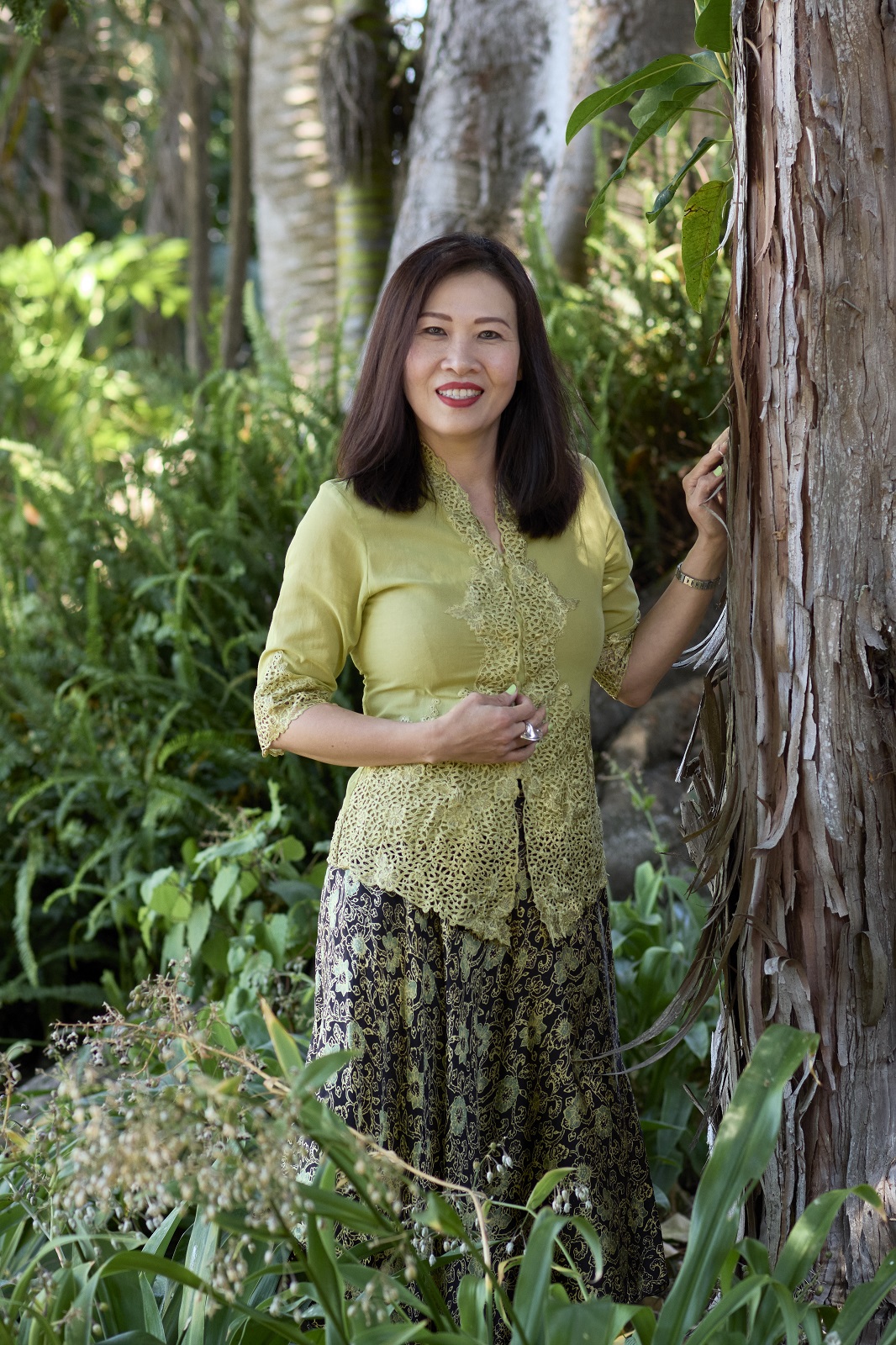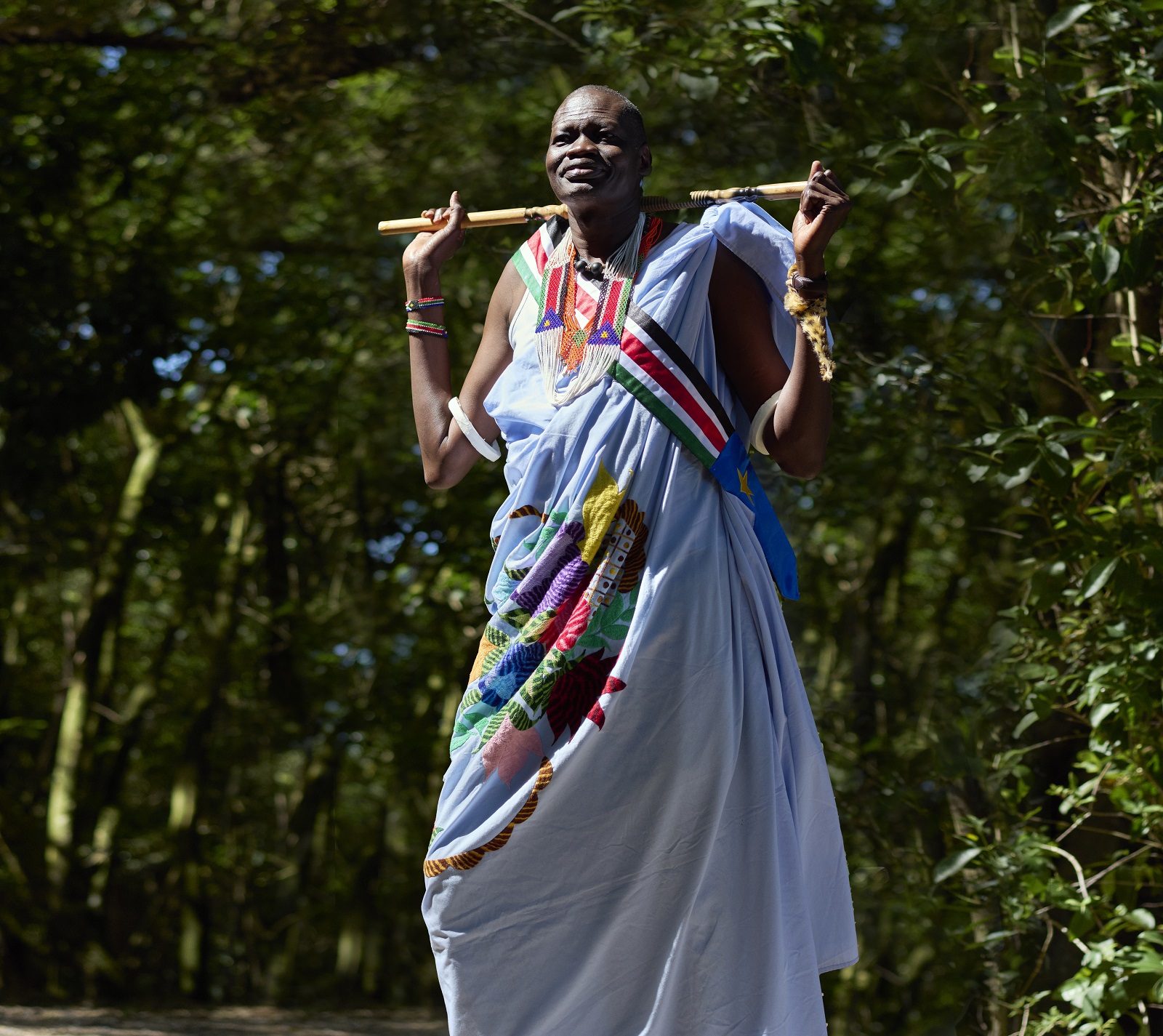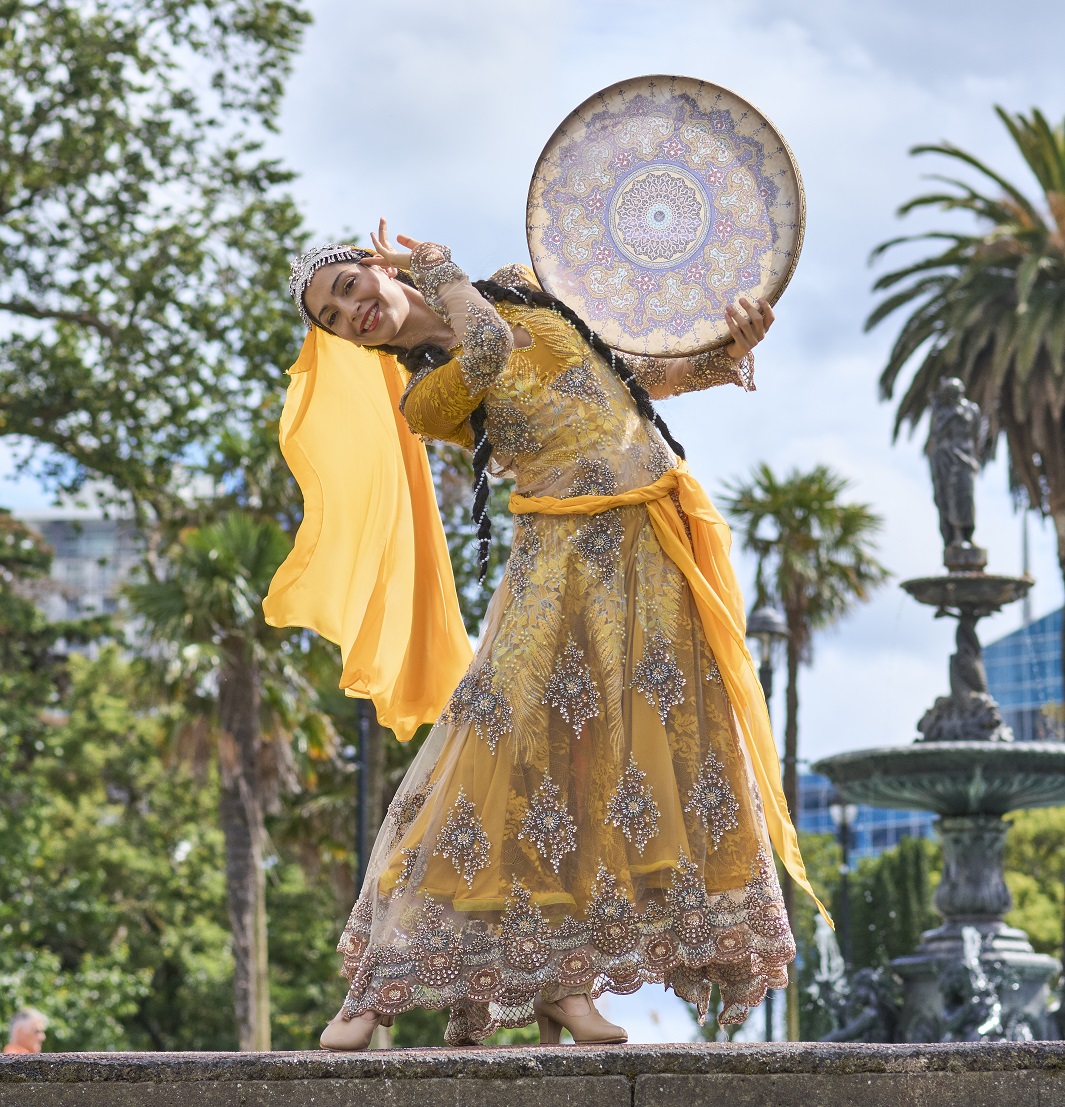With Race Relations Day celebrated in March we spoke to four creative Aucklanders and performers scheduled to appear at Auckland Council's World of Cultures festival (which will be held 18 March – 3 April dependent on alert level restrictions).
They shared how they keep their culture close to them while calling Auckland home.

Sunil Kaushal
Even if you’re not familiar with Holi, you’ve probably seen images of the annual Indian festival in which revellers cover each other with brightly coloured powder.
A key part of Hindu culture,
which started as a way to welcome the harvest, Holi is also recognised for its celebration of love, relationships and family.
Sunil Kaushal, president of Waitākere Indian Association, says Holi has been incorporated many times into public festivals in Auckland.
Holi usually opens with the traditional faag (singing) but it’s the colour everyone comes for. “We use eco-friendly coloured corn starch, which dissolves and doesn’t get into the waterways.”
Sunil came to Aotearoa in 1995 to study management in Tauranga and says it was initially a culture shock to go from a city of 20 million to a city of around 60,000.
“But I chose to come here instead of in the US or UK because I wanted a quieter place.”
He moved to Auckland two years later, got a job in the finance industry, married his Kiwi wife and had four children now aged 11-20.
For Sunil, sharing his culture means not only with Kiwis but also with his children. “Culture is ingrained with value so it’s important to show our children what our values are.
And for my children to know their father’s culture.”

Rozana Lee
Working across textile, video and painting, a mark of artist Rozana Lee’s work is combining elements from her birth country of Indonesia, her Chinese ancestral heritage and her adopted home, Aotearoa.
“I use a Tjanting, the traditional Indonesian Batik tool, for applying hot wax on hand-dyed fabric. I mix Chinese silk satin, Oriental or Islamic floral scrolls, pōhutakawa and fern motifs interwoven with migrating birds, highlighting the idea of migration and marking a pattern of a multicultural home."
It’s a way to honour her past and retain the connections, adds Rozana, who grew up in her parents’ textile shop in Aceh, North Sumatra. “If you don’t honour the past, how can you fully embrace the future? I’m interested in creating a space where differences can be felt as togetherness or belonging.”
Losing her mother in the 2004 Boxing Day tsunami was key to Rozana reviving her passion for art.
“The catastrophe prompted me to re-evaluate my life,” says Rozana, who moved to Auckland in 2010 after marrying her Kiwi husband, Grant Lee, who she met when both were working in Singapore.
The Epsom-based artist juggled raising two sons (now 15 and 17) with two degrees: a Bachelor of Visual Arts from AUT (2015) and a Master of Fine Arts from The University of Auckland (2018).
Some of Rozana’s latest works will be on display during the World of Cultures festival, including six large-scale pieces of textile art, patterned with decorative designs and cultural motifs, that will be exhibited in the entrance to Māngere Arts Centre.
“The colours are reminiscent of the rays of a rainbow.”

Gatluak Chuol
“If my story can change someone’s life, then I have succeeded,” says Gatluak Chuol.
And what a story it is: the Meadowbank resident left his native South Sudan when he was 13 years old because the country was embroiled in civil war. “I was on my own and it took three months to walk to Ethiopia because of the fighting.”
He was eventually reunited with his family at an Ethiopian refugee camp but 11 years later had to again flee due to war and walked to Kenya where he spent another 11 years in a refugee camp. Here he would sell his rationed food to pay for an English teacher. “We had no pens or paper, we drew with sticks in the sand.”
He met his wife Lillian at that camp and the couple had the first two of their four children. But Gatluak got stuck in South Sudan when he returned there for work and his family thought he had died. Lillian and the children were eventually resettled in Auckland and Gatluak ended up in the US for 11 years. He was reunited with his family in 2015 and now works as a community advocate in the refugee sector.
It’s this story that Gatluak often shares at events and festivals. “Some people cried and one woman hugged me and said I changed the way she looked at the world.”
“Culture is our identity and it is an honour to share my culture with other Kiwis. I’m able to learn something from other cultures and I hope that others can learn something about my culture from me.”

Aida Sajadi
Aida Sajadi can remember the first time she realised the power of dance. The Northcote- based belly dancer/Persian cultural dancer was nine and living in South Western Iran.
“The women of my town would have women-only parties for every occasion, from baby showers and birthdays to graduations or just for fun. Since then, dance has always been my greatest connection to my culture.”
In 1979, when Iran’s Islamic regime came to power, they strictly restricted civil liberties, including banning dancing from public spaces.
“Ironically, I’m only able to keep the tradition of Classical Persian dance alive because I don’t live there.”
In 2000, Aida, her mother and younger sister Rana came to Auckland as refugees. “We chose New Zealand because we knew it was one of the most beautiful and peaceful countries on earth.”
Within a few weeks of arriving, Aida’s mother started running dance classes from the family’s tiny Mt Eden living room.
“Dance is now my full-time occupation. My specialities are belly dance and classical Persian dance, but the latter is not as well known or practised here, so people mostly hire me to belly dance at their events, usually weddings, corporate events and birthday parties.”
“Nowruz is the most important day on the Persian calendar and marks the first day of spring and the start of the new year. It’s celebrated throughout Central Asia by over 300 million people.”
World of Cultures 2022
Starting on 18 March and running to 3 April, World of Cultures celebrates Auckland’s vibrant cultural fabric with activities and events across the region. The festival closes out with CultureFest (3 April), a spectacular one-day celebration of the many cultures who call Tāmaki Makaurau home.
Enjoy food, cultural dress, performances, art and opportunities to learn something new - all together in one place. Presented by Auckland Council.
Visit worldofcultures.co.nz for festival details and the latest updates around COVID-19 restrictions.


